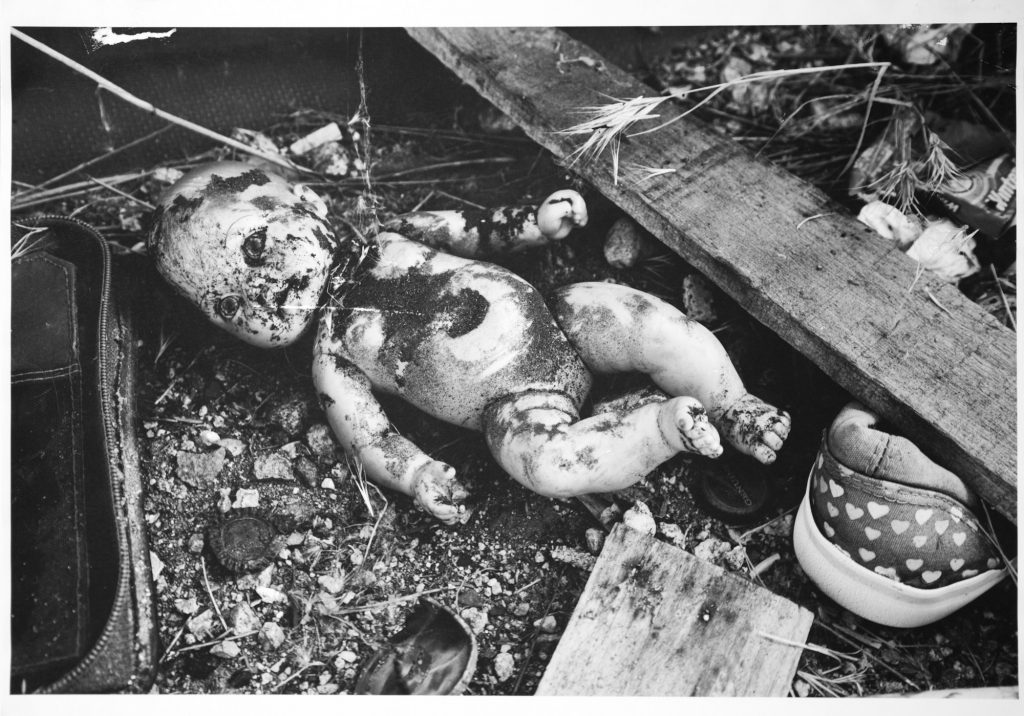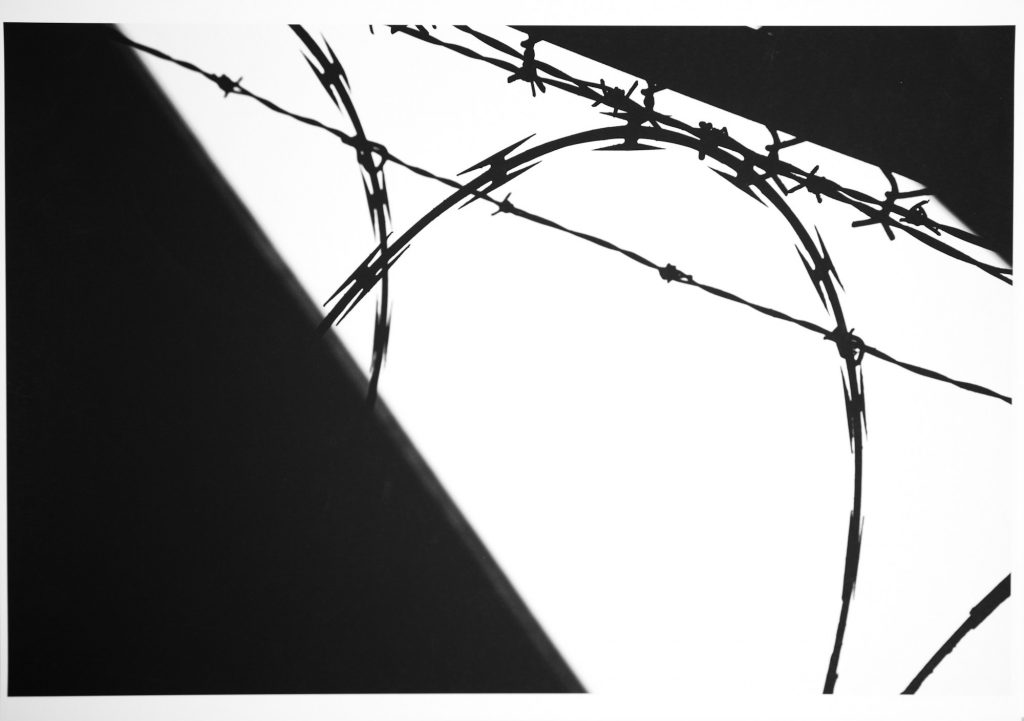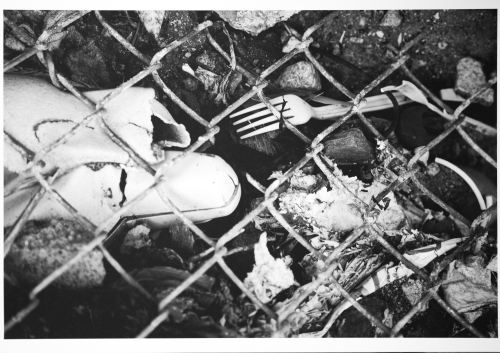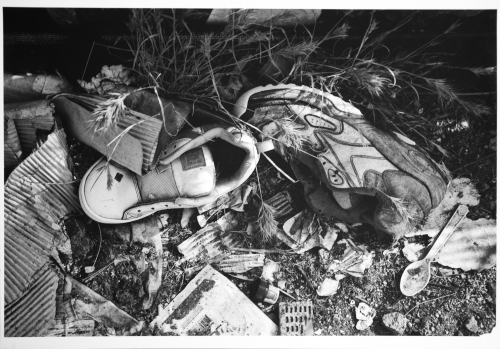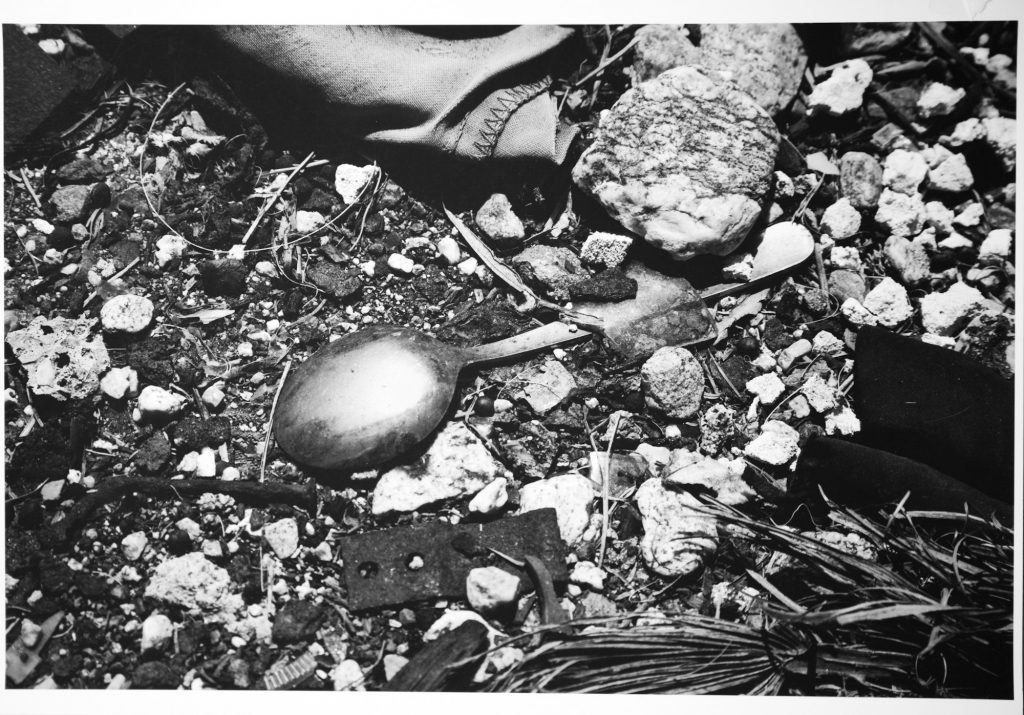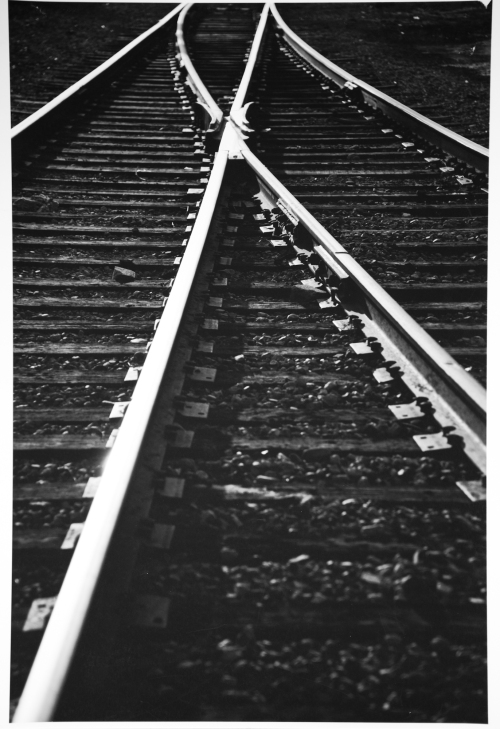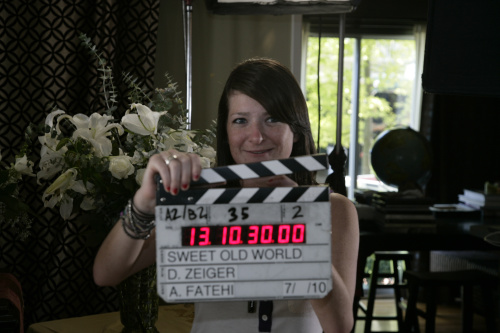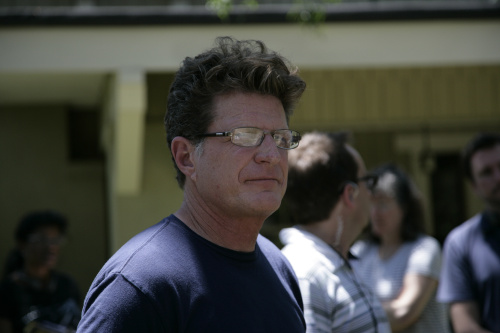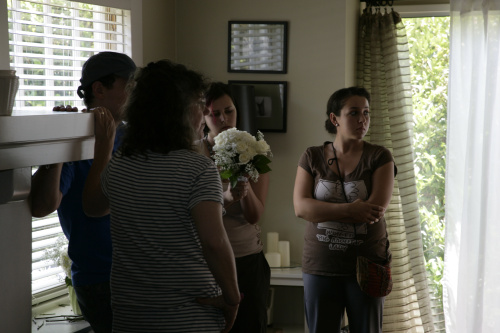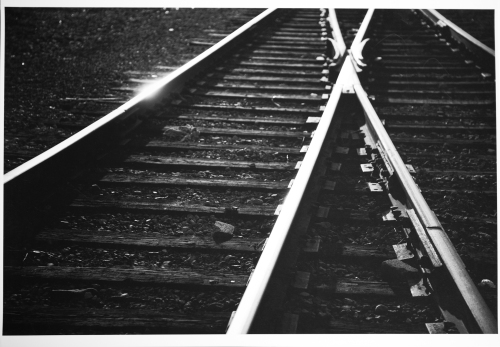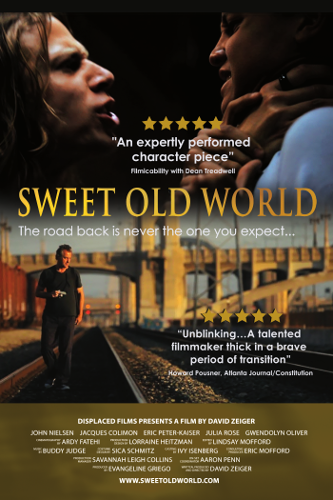
“One of the highlights of the 2012 Atlanta Film Festival…What the drama has going for it is the unblinking way it conveys familial loss and a renewed love between father and son that holds a ray of promise for their futures. ‘Sweet Old World’ shows a talented filmmaker thick in the middle of a brave period of transition.”–Howard Pousner, Atlanta Journal/Constitution
“An expertly performed character piece… Zeiger’s documentary roots show spectacularly through in Sweet Old World’s finest moments.”– filmicability with Dean Treadway
“It was a treat to experience Mr. Zeiger’s foray into narrative feature filmmaking (after a number of successes as a documentary filmmaker) – and the young star of the film, Jacques Colimon, is a gem. I predict that both of these humble and talented artists will continue on to much more success.– Tenaya Cleveland, North Georgia Leisure
“Solid portrayal of loss and love between father, son…
What the drama has going for it is the unblinking way it conveys familial loss and a renewed love between father and son that holds a ray of promise for their futures. Sweet Old World shows a talented filmmaker thick in the middle of a brave period of transition.”
Howard Pousner, The Atlanta Journal-Constitution
“Sweet Old World is a unique and welcome film. Drawing from his own life’s tragedy, David Zeiger has created a story that is in turns heartbreaking and heart healing. He takes viewers deep inside the all-too-often hidden world of families living through the years with the death of a child. An insightful journey of two souls searching for peace. I highly recommend Sweet Old World to those who have taken that unwanted journey, the people who support them, and anyone looking for a unique, satisfying film.”
Gloria Horsley, Open To Hope Foundation
The lives of Brian Hinkle and his teenage son Ethan were shattered eight years ago when Ethan’s ten-year-old brother Michael was tragically killed while playing with a friend on railroad tracks. Today Brian is still consumed by his own private grief and pain and obsessively photographs trash by railroad tracks and on the edges of the city. And Ethan, now sixteen and a talented musician in the school marching band, is heading for Julliard. Their weekends together are an exercise in painful disconnection as their relationship has grown strained and cold over the years.
Michael’s friend Jimmie, who was with him when he was killed, disappeared with his family immediately after the accident. When he reappears at school and joins the marching band, Ethan and Brian’s carefully constructed protective shells begin to crumble. Jimmie is a wild and reckless kid, but he befriends Ethan and draws him into his world. Meanwhile, Ethan feels that his lost brother has returned and relishes this new friendship while Brian is stunned by Jimmie’s return and begins following and secretly photographing the two of them.
When Ethan finally confronts Jimmie to learn the truth about how his brother died, it sets off a string of events that bring father and son to the brink of disaster and the potential for a new life and relationship.
Told in the midst of the South Pasadena High School Marching Band, Sweet Old World is about a father’s grief, and the son who frees him.
This film is distributed by Passion River Films.
How do you live with the unlivable?
My son Michael died on August 9, 1986. His death was sudden and incomprehensible. He was nine years old. His younger brother Danny was seven. I was a thirty-six year old photographer, and for two years after Michael’s death I could only photograph trash–the abandoned remnants of past lives.
I have now been a documentary filmmaker for the past twenty years. My second film, The Band, was set during Danny’s junior year in high school in 1996. As told through my eyes, it was both the story of his life and world centered around his high school marching band, and of our relationship nine years after Michael’s death.
Twelve years later, The Band was the starting point for Sweet Old World, my first fiction film. I began writing the screenplay fifteen years ago, and with a Guggenheim Fellowship went into production in the Spring of 2010. After a short but gratifying festival run, I put the film on a shelf, not yet ready to bring it to the world.
The reality is, it took me that long to find the story I wanted to tell, and to know why I wanted to tell it. The emotional landmine that is life after the death of a child is so complex, so unexpected, and so frightening that it is rarely, I believe, depicted well in films. There are exceptions–The Accidental Tourist and Moonlight Mile come to mind, and one that I have gone back to repeatedly is the The Son by Luc and Jean-Pierre Dardenne–a film that tells the startling story of a father who discovers that the new student in his carpentry class is the recently paroled killer of his son.
To find my story, I went back to a pivotal day I will never forget, a little over a year after Michael died. One evening, home from work, I realized that for the first time since his death I had gone an entire day without thinking or crying about Michael. This was not a moment of joy–far from it. I reacted with horror at the sudden realization that there would be a time when I will go days, weeks, months without feeling the knife edge of his death, when my grief will morph into something else.
It was as if Michael had died once again. Losing my grief was tantamount to abandoning him, handing him over to the myth of “closure” and the horrendous mantra, “Life goes on.” It was accepting life without Michael, an unacceptable reality.
This is a moment everyone who has lost a child goes through. It’s a second death, a time of great despair. And it is the juncture when you have to make a choice, to decide to accept what will never be acceptable and find a way to live with it. The choice is terrible, but unavoidable.
I decided to tell the story of a man, Brian Hinkle, who couldn’t make that choice. Eight years after his son’s death he has wrapped himself in the shroud of his grief and turned away from his life. He is, in Joan Didion’s words, pathologically grieving. Frozen. Dead, yet still here.
But there’s one “problem”–Brian has another son, Ethan. Just seven when his brother died, Ethan’s own pain and grief have never been acknowledged by his father. Their relationship, mirroring Brian’s life, is cold and empty.
I wanted to explore what would happen to father and son if something, or some one, made it impossible to continue living that way. Would they find a new connection, a new relationship? Or had the rut of the past eight years grown too deep, too ossified? That’s the story of Sweet Old World. It’s a film about finding the possibility for healing in unexpected, surprising places–and being open to those blue skies.
“I found Sweet Old World especially compelling in its depiction of how the death of a child resonates in unexpected ways through a family and over the years. This film could only have been made by someone who has endured the endless process of bereavement. The note of reconciliation on which it ended was the kind of resolution that we all seek. I was really moved by it.”
Dr. Gordon Livingston, author of Only Spring–On Mourning the Death of My Son
“Sweet Old World is a unique and welcome film. Drawing from his own life’s tragedy, David Zeiger has created a story that is in turns heartbreaking and heart healing. He takes viewers deep inside the all-too-often hidden world of families living through the years with the death of a child. An insightful journey of two souls searching for peace. I highly recommend Sweet Old World to those who have taken that unwanted journey, the people who support them, and anyone looking for a unique, satisfying film.”
Gloria Horsley, Open To Hope Foundation
Drama of familial loss, love a film festival opening weekend highlight
One of the highlights of the 2012 Atlanta Film Festival…What the drama has going for it is the unblinking way it conveys familial loss and a renewed love between father and son that holds a ray of promise for their futures.
“Sweet Old World” shows a talented filmmaker thick in the middle of a brave period of transition.
– Howard Pousner, The Atlanta Journal-Constitution
2012 Atlanta Film Festival review: SWEET OLD WORLD
An expertly performed character piece… Zeiger’s documentary roots show spectacularly through in Sweet Old World’s finest moments.
– filmicability with Dean Treadway
Opening Weekend @ Atlanta Film Festival!
It was a treat to experience Mr. Zeiger’s foray into narrative feature filmmaking (after a number of successes as a documentary filmmaker) – and the young star of the film, Jacques Colimon, is a gem. I predict that both of these humble and talented artists will continue on to much more success.
– Tenaya Cleveland, North Georgia Leisure
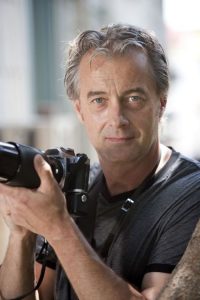
Zieger Film production stills. South Pasadena High School.
“Brian Hinkle” – JOHN NIELSEN
A Brooklyn native, Mr. Nielsen has appeared in over twenty films. He was most recently seen in Clint Eastwood’s Hereafter, as well as, Transformers: Revenge Of The Fallen, Case 219, Flags Of Our Fathers and End Of Days. Numerous TV guest spots include Criminal Minds and Ghost Whisperer, as well as recurring roles on NYPD Blue and Kings. He was a series regular on Nickelodeon’s acclaimed The Secret World Of Alex Mack.
Mr. Nielsen has also performed on stage throughout Los Angeles, New York, and Seattle. He was last seen onstage in Ensemble Studio Theatre-LA’s Mlle. God by Nicholas Kazan. Other LA theatre includes The Idea Man, also with EST-LA, Christmas In Chechnya at Company Of Angels, Lapin and Lapinova at The Greenway Court Theatre, and The Lisbon Traviata at West Coast Ensemble, for which he received a Garland Award.

“Ethan Hinkle” – JACQUES COLIMON
Jacques Colimon’s appearance speaks to his Haitian roots but he is a Californian, born and raised. He grew up surrounded by a large loving family of very distinctly different backgrounds–his father, mother, stepmother, grandmother, brother, uncles, aunts–all influenced and shaped the young man he is today. Fluent in French he is equally comfortable in the funky, urban cool of Los Angeles.
Jacques first began developing his talent and passion for acting in high school under the direction of Donna Tucker where he learned much about the craft and business of theatre. Seeking to enhance his film experience, he went on to study acting for the camera at Northwestern University and the University of Texas at Austin.
Karma and the stars aligned when he met David while still in high school and the rest is history! Jacques is currently a student at the University of Texas at Austin studying Theatre and Dance, eagerly awaiting his next film opportunity.
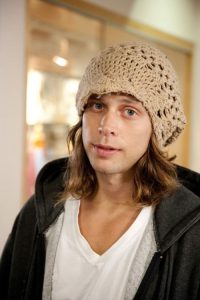
David Zeiger film “Sweet Old World” production stills, SPHS.
“Jimmy” – ERIC PETER-KAISER
From Vancouver, Canada Eric began taking acting classes while playing ice hockey to become more comfortable with the press. Rather than continuing with his career in hockey to play pro in Europe Eric opted to change career paths and study Theatre at the University of Potsdam, NY. After a short time at school he became one of over 5,000 hopefuls to audition for the blockbuster Disney film MIRACLE, and after a three-month wait landed one of the lead roles portraying Mark Johnson. Eric then moved to Los Angeles and has continued to act in both films and television. In 2004 MIRACLE won the ESPY award for Best Sports Movie and in 2008 Eric won Best Actor for his performance in the films EVILUTION and BASEMENT JACK.
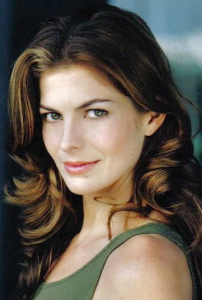
“Ruth Nelson” – JULIA ROSE
A Zambian-born actress who is best known for numerous guest starring roles in major network series such as HOUSE, Navy NCIS, CSI:NY and Star Trek: Enterprise. She has also appeared alongside Jack Nicholson in Nancy Meyers’, “Something’s Gotta Give”, and won an award in 2009 for Best Acting for her performance in the acclaimed short film, “Fist Full of Love”.
She has taken to stage to portray such great characters as Tennessee Williams’ Blanche in “Streetcar Named Desire” and Victor Hugo’s Marion de Lorme in the play with the same name. This latter role she performed on stage in Paris in French, a language she speaks fluently.
 “Cynthia Timberlake” – GWENDOLYN OLIVER
“Cynthia Timberlake” – GWENDOLYN OLIVER
An accomplished actress who has appeared in numerous films and television shows including Desperate Housewives, Prison Break and Veronica Mars. Her roles have ranged from a homeless crack addict to a hot shot homicide detective. She got bit by the acting bug, at 10 years old, when she landed the lead role in a school drama production. Years later, she’s still infected and not looking for a cure.
A triple threat, Gwendolyn’s extensive dance training in ballet and jazz led to an invitation to join a professional dance company in San Francisco. Gwendolyn’s singing talent (mezzo soprano) was evident in the various musical theater productions she starred in, including “Anita” in “West Side Story”.
Gwendolyn has a degree in molecular biology, is a trained classical pianist and plays a candy apple red bass guitar. She also teaches dance to at-risk inner city kids through the nonprofit, City Hearts in Los Angeles.
Jacques Colimon … Ethan Hinkle
Eric Peter-Kaiser … Jimmy
Julia Rose … Ruth Nelson
Gwendolyn Oliver … Cynthia Timberlake
Jonathan Naritoku … Himself
Howard Crawford … Himself
Tom Float … Himself
Erin Cahill … Eva
A. Russell Andrews … Hal Timberlake
Kyle Weishaar … Wes
Jimmie Wood … Lyle
Johanna Watts … Bride #1
Branden Cook … Groom #1
Joe Ochman … Priest
Fanny Veliz … Bride #2
Jason Ellefson … Groom #2
Melissa Strom … Bride #3
Max Adler … Groom #3
Blake Reed … Groom #4
Micah Tayloe Owens … Dancer at wedding
Written & Directed by
David Zeiger
Producers
Evangeline Griego
David Zeiger
Consulting Producer
Eric Mofford
Cinematographer
Ardy Fatehi
Editor
Lindsay Mofford
Original Music
Buddy Judge (music composer)
Casting Director
Ivy Isenberg
Production Designer
Lorraine Heitzman
Costume Designer
Sica Schmitz
Make Up Department
Grace Phillips … key makeup artist
Jamie Richmond … makeup artist
Production Managers
Savannah Collins … unit production manager
Renee Tod … unit production manager
Assistant Directors
Aaron Penn … first assistant director
Lisa Zugschwerdt … second assistant director
Jared Bealer … second second assistant director
Art Department
Ariana Del Rio … art pa
Jean Kimber … art pa
Alex Sherman … art pa
Sara Strachan … art pa
Karen Reynoso … graphics p.a.
Sound Department
Sean Byrnes … boom operator
John Salcedo … sound mixer
Stunts
Jeri Habberstad … stunt coordinator
Camera and Electrical Department
Russell Bell … electrician
Douglas Biel … electrician
Michael Di Ricco … key grip
Shane English … first assistant camera
Cecilia Guerrero … first assistant camera
Carl Herse … lighting technician
Sam Kim … grip/electric production assistant
Tony Lopez-Cepero … best boy
Steven Mangusten … assistant camera
Johan Martínez … electrician
Jeremy Mennel … best boy
Justin Moran-Duquette … gaffer
Peter Ozarowski … assistant camera
Andy Patch … camera operator
Ashley Pavicic … best boy
Andrew Poland … first assistant camera
Paul Rivera … key grip
Barrett Schreiner … grip
Sérgio … gaffer
Justin Shell … gaffer
Travis Smith-Evans … second assistant camera
Brian Sowell … first assistant camera
J. Aaron Stinde … key grip
Casting Department
Adam Benjamin Scott … extras casting
Costume and Wardrobe Department
Harshida Beeravolu … wardrobe intern
Julius Bronola … wardrobe assistant
Editorial Department
Stefan Rhys … additional editing
Seana Carroll … additional editing
Travis Smith-Evans … assistant editor
Raul Sanchez … post-production assistant
Miscellaneous Crew
Michael Coulombe … script supervisor
Mike Dennert … script supervisor
Lisa Mastramico … location manager
Adam Benjamin Scott … office manager
Wanda Millberry … craft service
William August … attorney
Jeri Kalvan … coordinator
Beatriz Chahin … asst. production coordinator
Katie Cassidy … key set production assistant
Andrew S. Cohen … office production assistant
Nick Colt … production assistant
Kirisa Gavrin … production assistant
Emily Joe … production assistant
Adria Kelly-Sullenger … production assistant
Jooyeon Kim … production assistant
Louise Miclat … production assistant
Stuart Nelson … production accountant
Tanya Pérez … production assistant
Roger Porter … production assistant
Lauren Schlossman … production assistant
Max Silver … production assistant
Dakota Anderson … production assistant
Jessica Wood … script production assistant
-
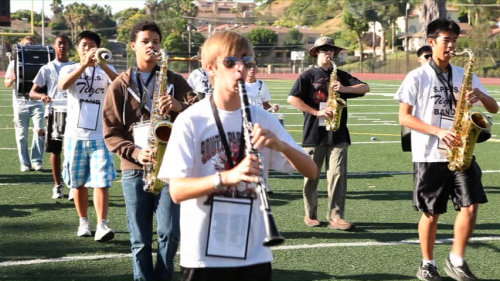
- Ethan practices with Band Camp.
-
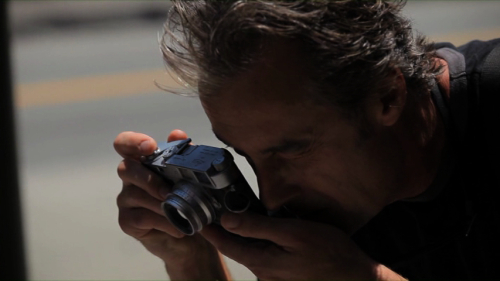
- Brian takes pictures along L.A. city streets.
-
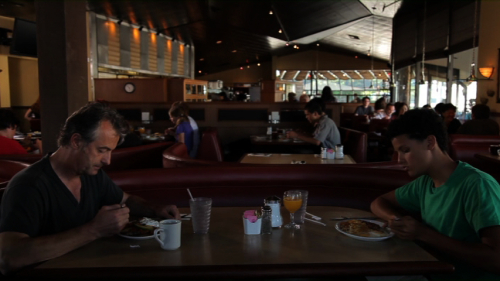
- Brian and Ethan share an awkward breakfast.
-
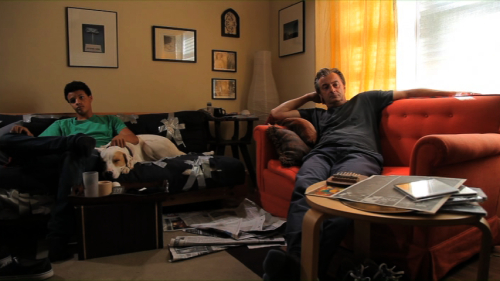
- Brian and Ethan go through the motions of their weekend.
-
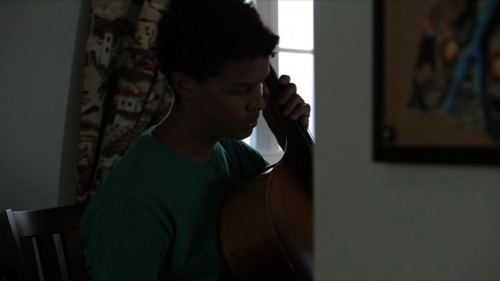
- Ethan practices his cello.
-
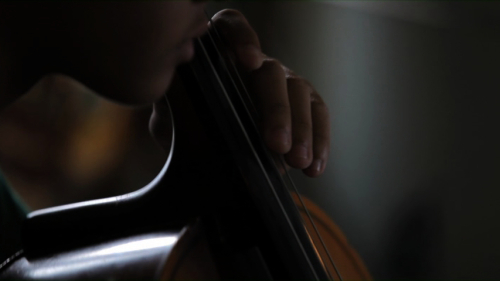
- Ethan’s cello.
-
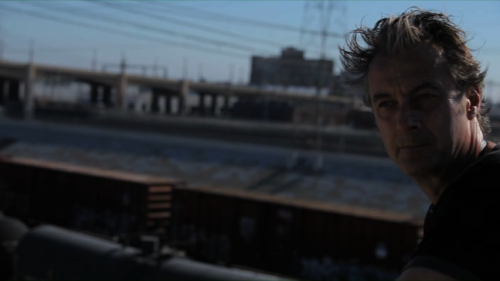
- Brian scans the railway.
-
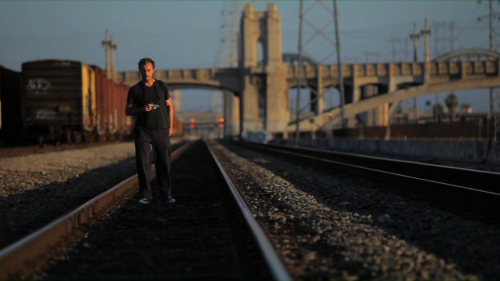
- Brian takes photos at the train tracks.
-
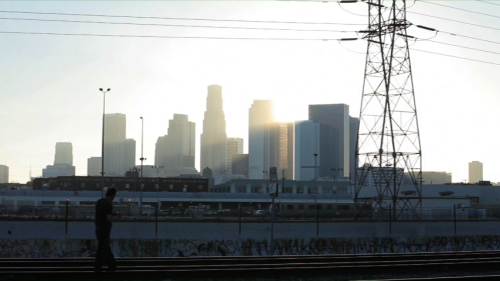
- Brian takes photos in the shadow of downtown L.A.
-
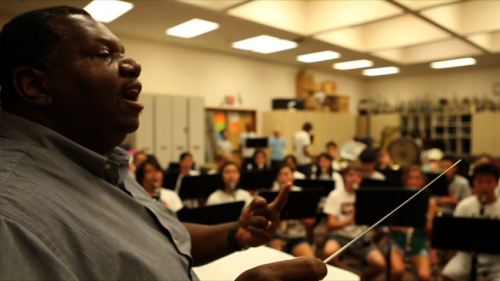
- Howard Crawford conducting.
-
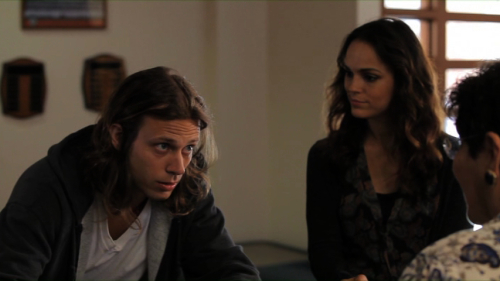
- Eva registers her brother, Jimmy, for school.
-
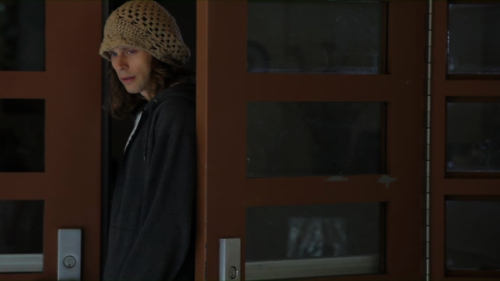
- Jimmy’s back.
-
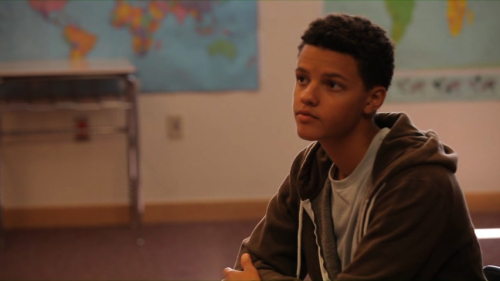
- Ethan in Ruth’s class.
-
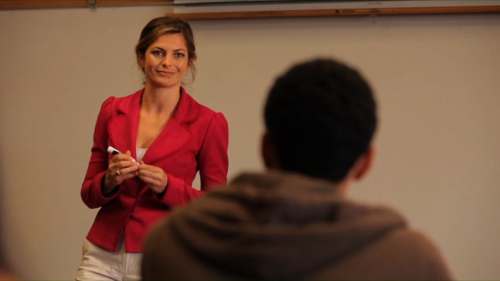
- Ruth smiles on her star pupil, Ethan.
-
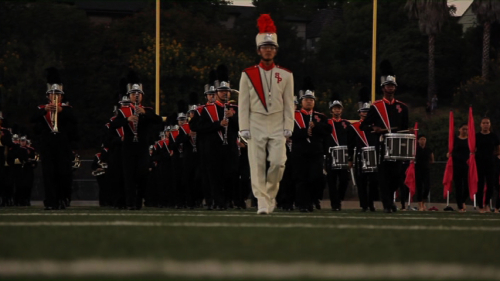
- Marching band takes the field for the half time show.
-
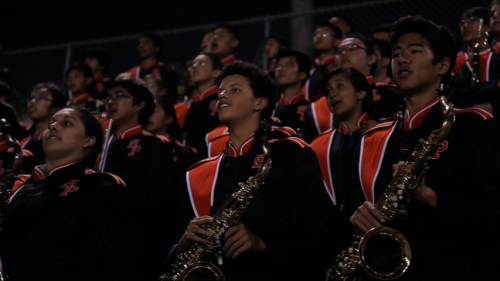
- Ethan in the stands with the band at football game.
-
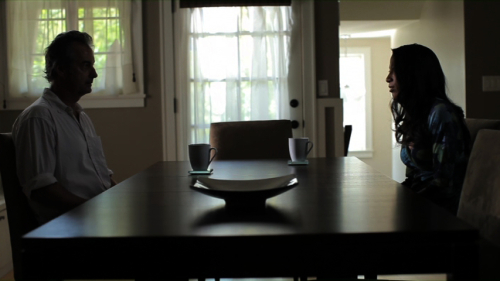
- Brian tells Cynthia that Jimmy’s back.
-
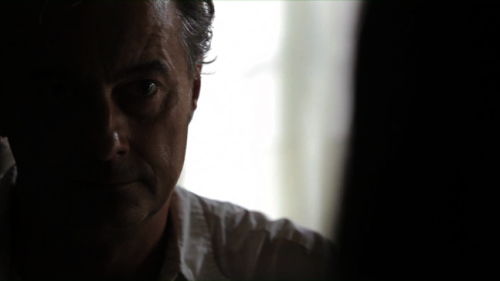
- Brian tries to avoid an argument.
-
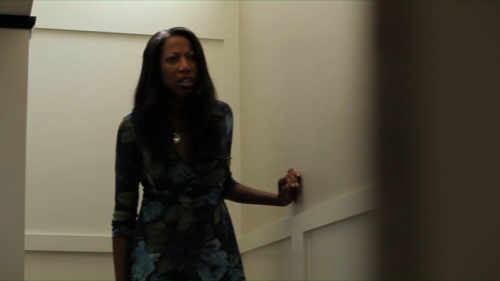
- Cynthia calms down after a fight with Brian.
-
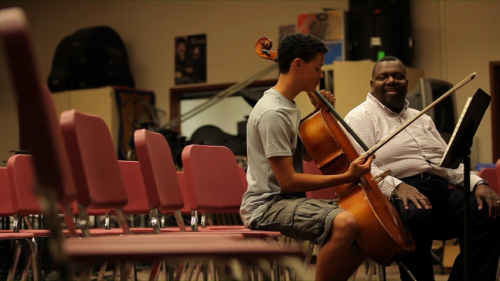
- Ethan gets his cello lesson from Howard.
-
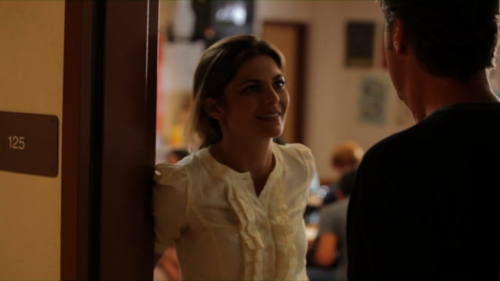
- Brian thanks Ruth for some good advice.
-
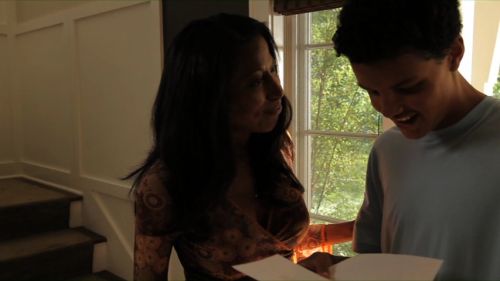
- Ethan receives some good news.
All Photos by Michael Newman.
-
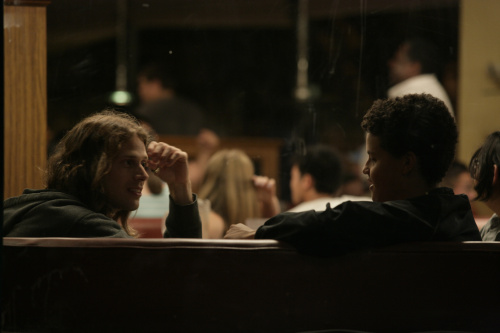
- David Zeiger Film, Displaced Films, Shakers Restaurant production stills.
-
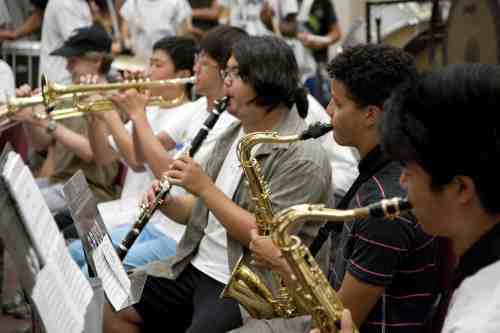
- David Zeiger Film S.O.W. production stills.
-
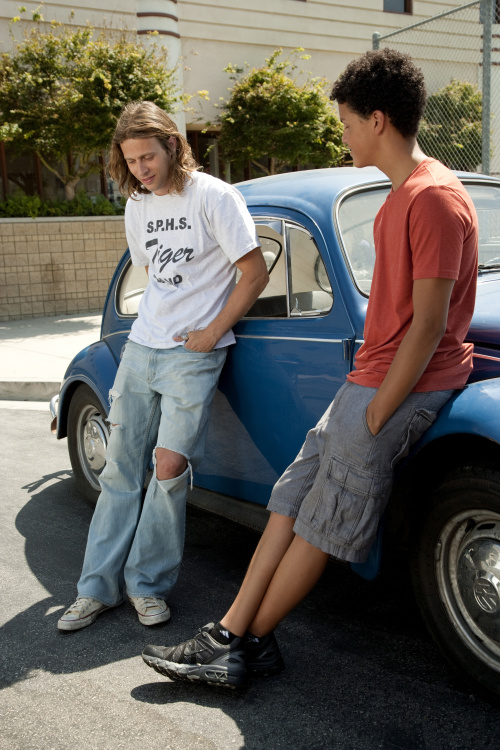
- David Zeiger Film production stills. South Pasadena High School.
-

- David Zeiger film “Sweet Old World” production stills, SPHS.
-
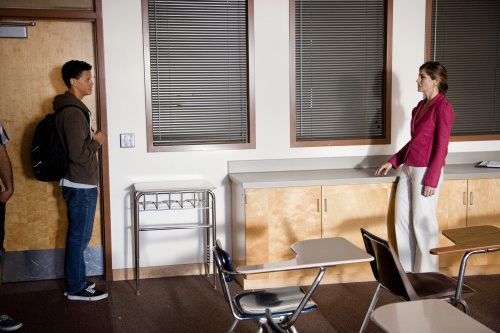
- David Zeiger film “Sweet Old World” production stills. SPHS, SPMS.
-
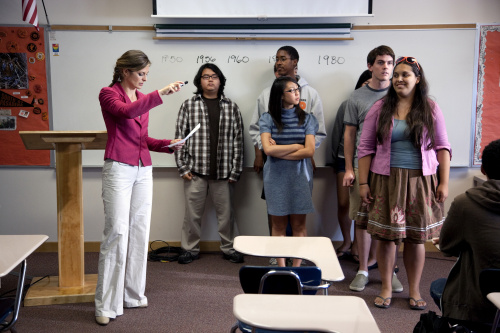
- David Zeiger film “Sweet Old World” production stills. SPHS, SPMS.
-
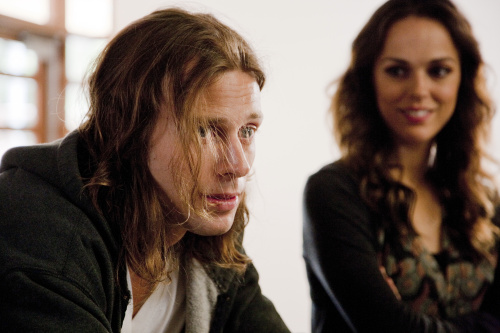
- David Zieger film “Sweet Old World” production stills, SPHS.
-
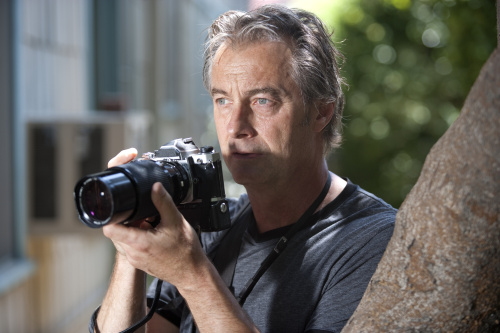
- David Zeiger Film production stills. South Pasadena High School.
-
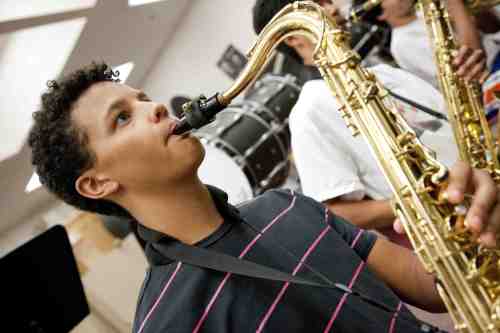
- David Zeiger Film S.O.W. production stills.
All Photos by Michael Newman.
Photos by Michael Newman
-
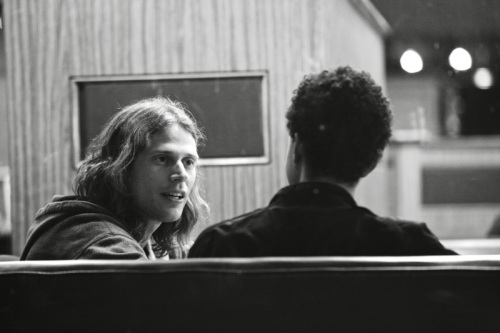
- David Zeiger Film, Displaced Films, Shakers Restaurant production stills.
-
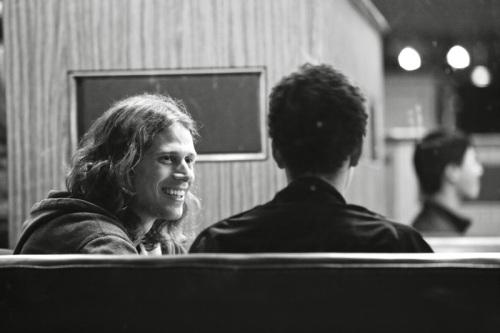
- David Zeiger Film, Displaced Films, Shakers Restaurant production stills.
-
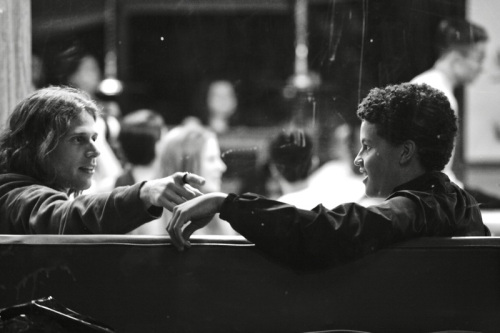
- David Zeiger, Displaced Films, Shakers Restaurant production stills.
-
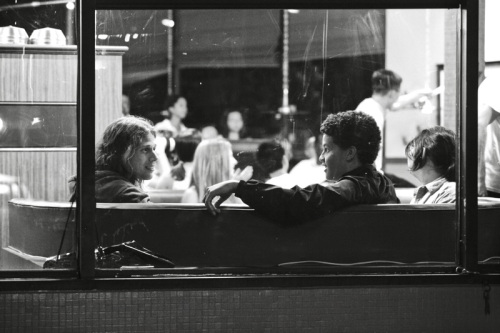
- David Zeiger Film, Displaced Films, Shakers Restaurant production stills.
-
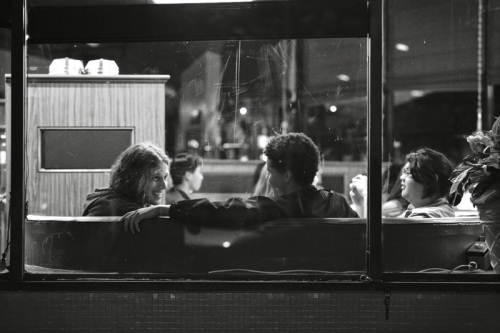
- David Zeiger Film, Displaced Films, Shakers Restaurant production stills.
-
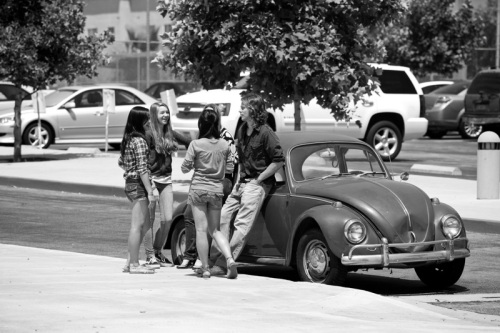
- David Zeiger Film production stills. South Pasadena High School.
-
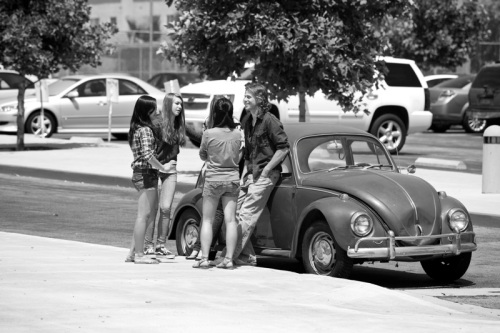
- David Zeiger Film production stills. South Pasadena High School.
-
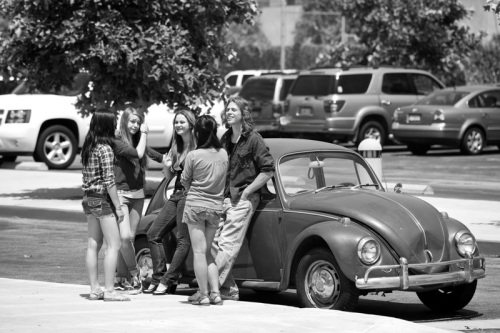
- David Zeiger Film production stills. South Pasadena High School.
-
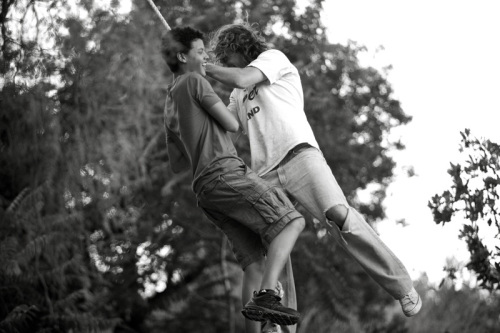
- David Zeiger Film production stills. Rope shots.
-
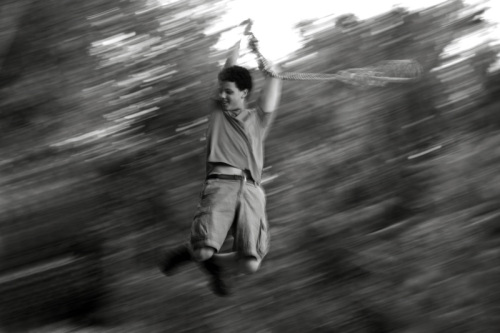
- David Zeiger Film production stills. Rope shots.
-
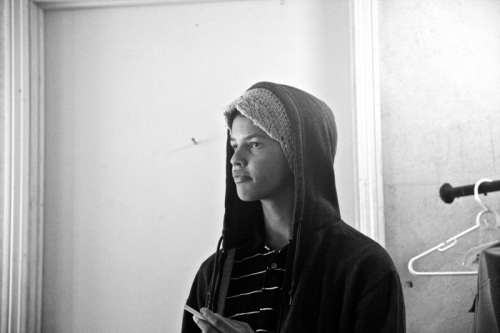
- David Zeiger Prod Stills 07.26.10; Ethan.
-
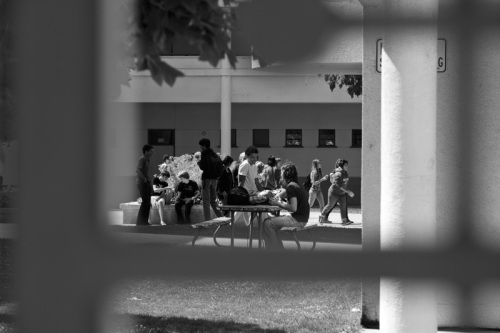
- David Zeiger film. Two kids on high school campus.
-
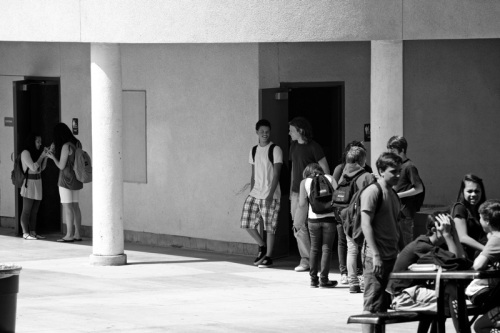
- David Zeiger film. Two kids on high school campus.
-
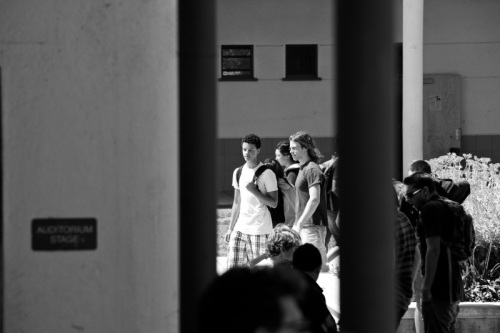
- Zeiger film. Two kids on high school campus.
-

- Zeiger film. Two kids on high school campus.
-
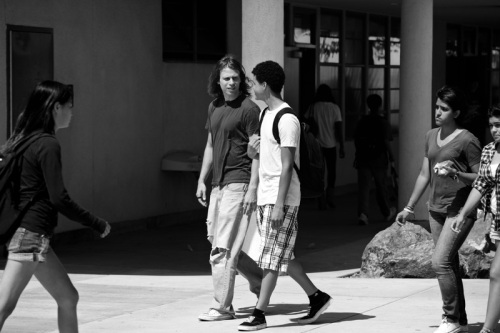
- Zeiger film. Two kids on high school campus.
-
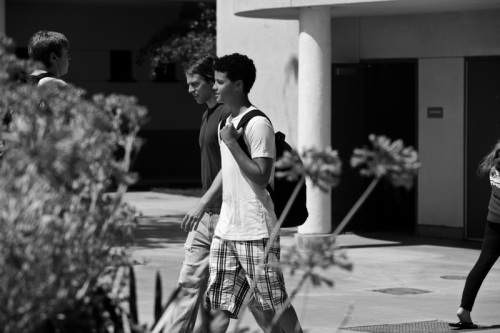
- Zeiger film. Two kids on high school campus.
-
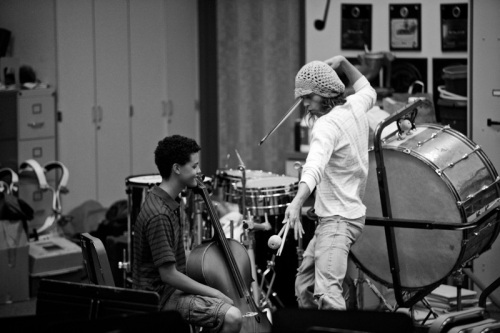
- Zeiger film. Two kids on high school campus.
-
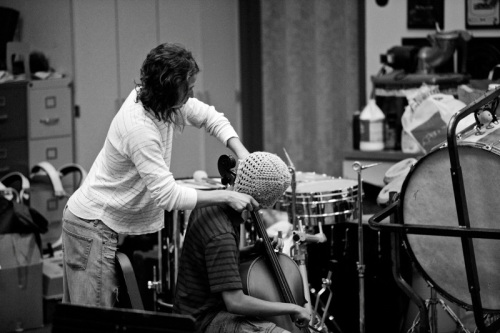
- Zeiger film. Two kids on high school campus.
-
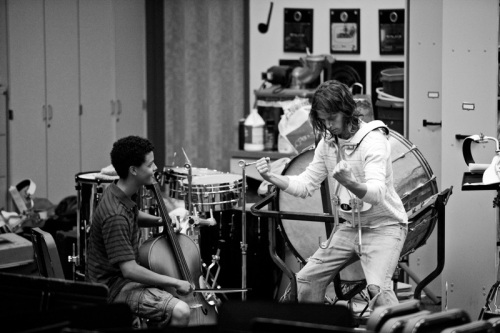
- Zeiger film. Two kids on high school campus.
-
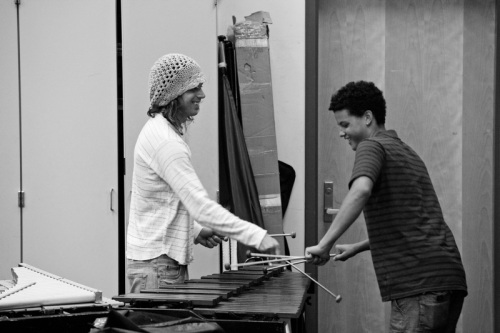
- Zeiger film. Two kids on high school campus.
-
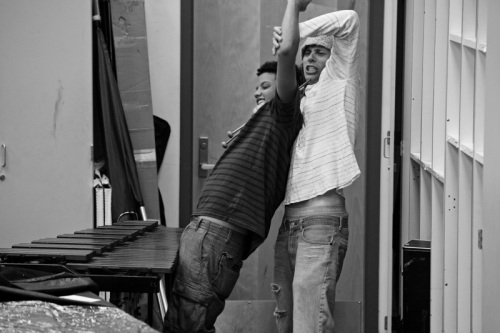
- Zeiger film. Two kids on high school campus.
-
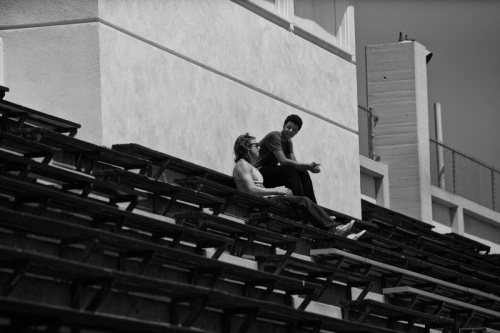
- Zeiger film. Two kids on high school campus.
-

- Zeiger Film production stills. Rope shots.
-
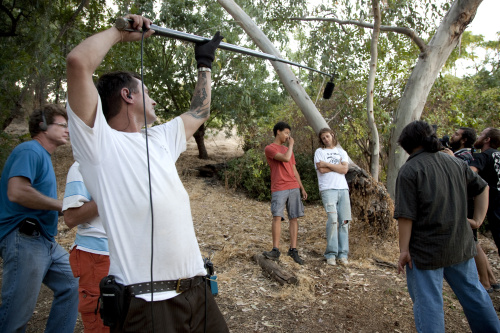
- Zeiger Film production stills. Rope shots.
-
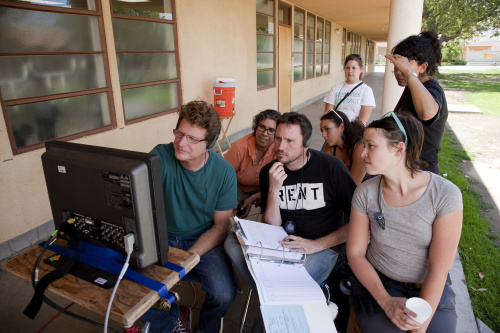
- David Zeiger film “Sweet Old World” production stills, SPHS.
-
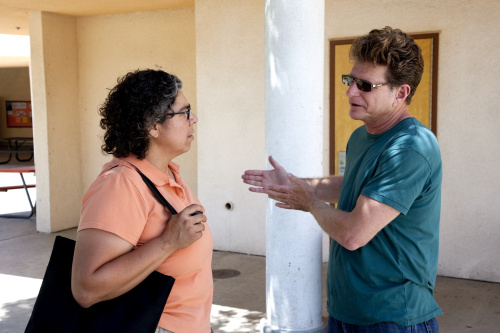
- David Zeiger film “Sweet Old World” production stills, SPHS.
-
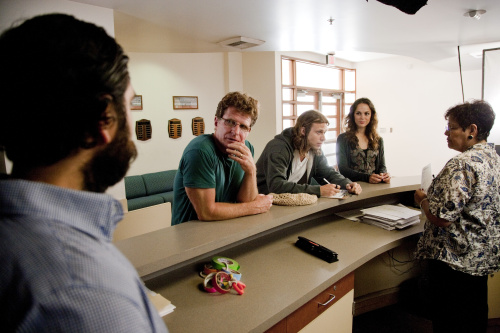
- David Zeiger film “Sweet Old World” production stills, SPHS.
-
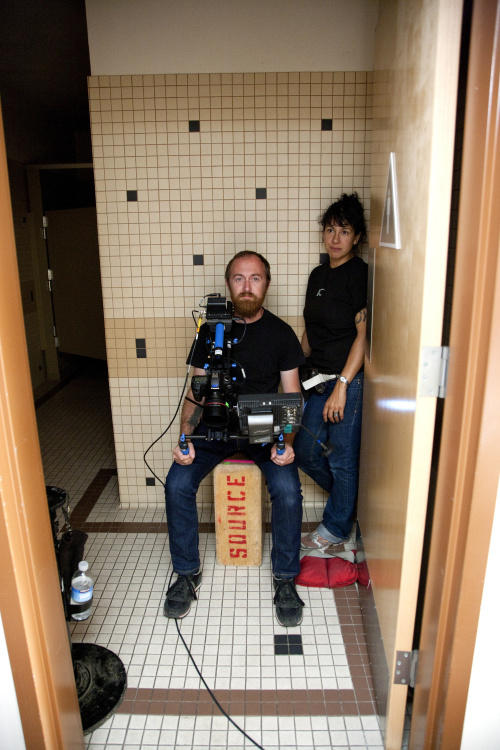
- David Zeiger film “Sweet Old World” production stills, SPHS.
-
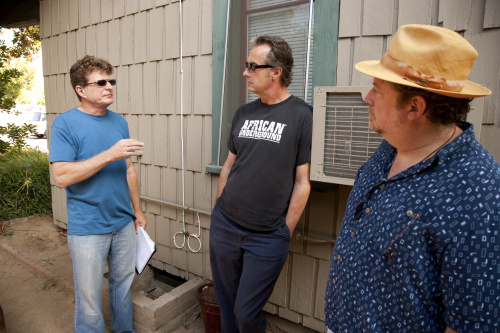
- Zeiger Film production stills. South Pasadena High School.
-
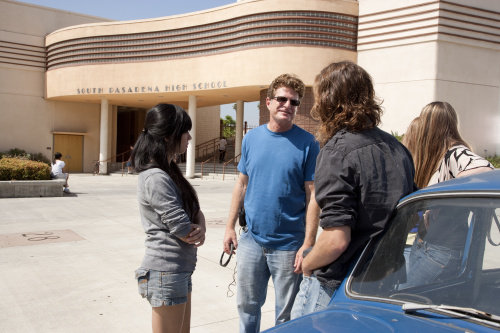
- Zeiger Film production stills. South Pasadena High School.
-
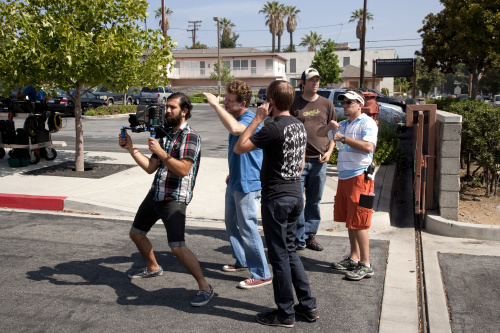
- Zeiger Film production stills. South Pasadena High School.
-
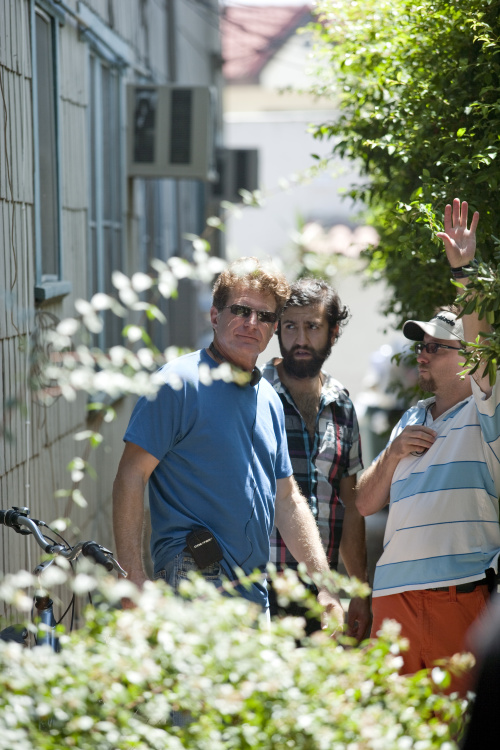
- Zeiger Film production stills. South Pasadena High School.
-
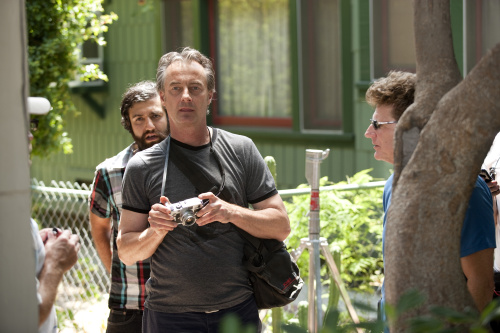
- Zeiger Film production stills. South Pasadena High School.
-
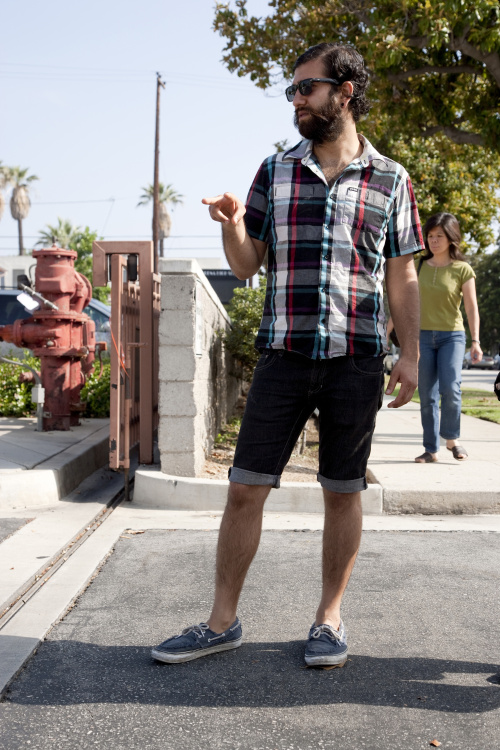
- Zeiger Film production stills. South Pasadena High School.
-
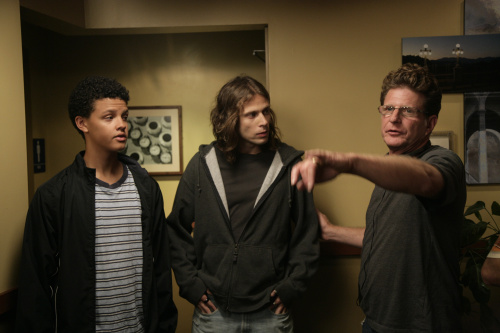
- Zeiger Film, Displaced Films, Shakers Restaurant production stills.
-
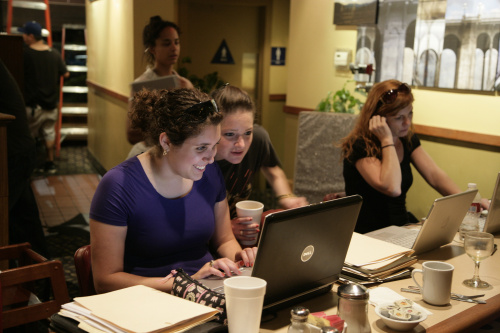
- Zeiger Film, Displaced Films, Shakers Restaurant production stills.
-
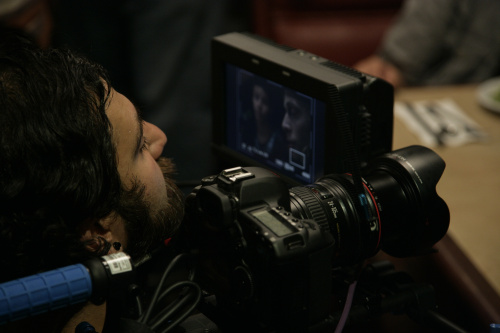
- Zeiger Film, Displaced Films, Shakers Restaurant production stills.
-
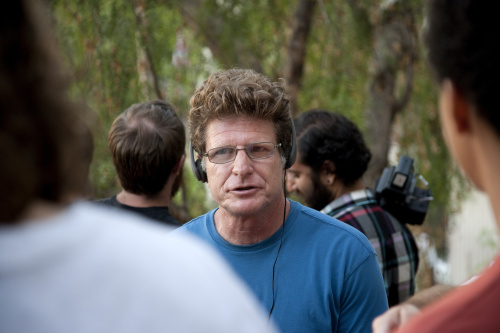
- Zeiger Film production stills. Rope shots.
MAY 12, 2015 · 11:24 AM
Interview
Director David Zeiger did an interview with Fast, Cheap Movie Thoughts about the making of SWEET OLD WORLD.
Check it out here:
http://fastcheapmoviethoughts.blogspot.com/2012/08/david-zeiger-on-sweet-old-world.html
AUGUST 6, 2012 · 9:17 AM
Kansas City FilmFest
An interview with director David Zeiger about Sweet Old World, taped at the Kansas City Filmfest.
This SPHS Grad Is Rocking Film Festivals
Originally posted on South Pasadena Patch–Patch Blog
 As Sweet Old World, the feature film I made in South Pasadena in 2010, weaves its way through the film festival circuit, Jacques Colimon has been creating quite a stir.
As Sweet Old World, the feature film I made in South Pasadena in 2010, weaves its way through the film festival circuit, Jacques Colimon has been creating quite a stir.
Jacques, who studied theater at SPHS and graduated just before we began filming, is now in his second year in the Theater program at the University of Texas at Austin. Jacques plays Ethan, a talented musician who has a troubled relationship with his father. His natural performance and screen presence has attracted praise from critics and audiences alike.
When Sweet Old World premiered at the Atlanta Film Festival in March, it was singled out by the Atlanta Journal-Constitution as the “Leading” film in the festival. The film blogger Dean Treadway called Jacques “A mindful young actor who’s terrific in his debut,” and blogger Tenaya Cleveland wrote that he’s “a gem…a humble and talented artist (who) will continue on to much more success.”
Howard Pousner’s review in the Atlanta Journal-Constitution had some wonderful things to say about Sweet Old World—calling the film a “solid portrayal of loss and love between father, son.” He went on to write:
The death of a child casts a long shadow, as former Atlanta filmmaker David Zeiger can attest.
Zeiger’s 1998 documentary ‘The Band’ chronicled the life of his son Danny during his junior year as a Decatur High School marching band musician, the story of a boy becoming his own young man. But it was also an essay of David’s own free fall after he lost older son Michael in a 1986 accident, the breach it caused in his family and professional lives, and his gradual reconnection with Danny.
Now, Zeiger returns to the difficult theme in his first drama, ‘Sweet Old World’…one of the highlights of the 2012 Atlanta Film Festival…What the drama has going for it is the unblinking way it conveys familial loss and a renewed love between father and son that holds a ray of promise for their futures.
There’ll be more to come as we continue on our festival journey, and again I want to thank the wonderful people at SPHS and in the South Pasadena community for being such an integral part of making Sweet Old World a reality.
Sweet Old World tells the story of Brian and his teenage son Ethan, whose relationship has become cold and strained in the years since Ethan’s brother Michael was killed in an accident. They find themselves on the brink of disaster and the potential for a new life when Michael’s best friend returns. Told in the midst of the South Pasadena High School Marching Band, Sweet Old World is about a father’s grief, and the son who frees him.
From “Opening Weekend @ Atlanta Film Festival!” by Tenaya Cleveland
DAY 1 (Friday): While standing in line at the Landmark Midtown Art Cinema (home base for the fest), I met filmmaker David Zeiger, standing with his lovely daughter. He told me that his film SWEET OLD WORLD would be showing on Sunday evening and invited me to attend.
DAY 3 (Sunday): Remember David Zeiger, the filmmaker I met on Friday? Well, I showed up for the premiere of his dramatic feature, SWEET OLD WORLD, and he greeted me with a big hug! He then introduced me to the break-out star of the film, Jacques Colimon, and invited me to go with the group to Manuel’s after the screening. It was a treat to experience Mr. Zeiger’s foray into narrative feature filmmaking (after a number of successes as a documentary filmmaker) – and the young star of the film, Jacques Colimon, is a gem. I predict that both of these humble and talented artists will continue on to much more success.
Read the rest of the piece at North Georgia Leisure→
Today Atlanta, Tomorrow the World! (Or Kansas City)
Jacques Colimon, David Zeiger, and Celia Zeiger at the Atlanta Film Festival world premiere of Sweet Old World
Sweet Old World premiered March 25 at the Atlanta Film Festival, where it received a wonderful reception. In a line-up that included several Sundance films, the Atlanta Journal-Constitution chose to highlight Sweet Old World in its preview of the festival, under the headline “Family Drama Leads Atlanta Film Festival.”
The preview by Howard Pousner called the film “a solid portrayal of loss and love between father, son…”
The death of a child casts a long shadow, as former Atlanta filmmaker David Zeiger can attest.
Zeiger’s 1998 documentary “The Band” chronicled the life of his son Danny during his junior year as a Decatur High School marching band musician, the story of a boy becoming his own young man. But it was also an essay of David’s own free fall after he lost older son Michael in a 1986 accident, the breach it caused in his family and professional lives, and his gradual reconnection with Danny.
Now, Zeiger returns to the difficult theme in his first drama, “Sweet Old World”…one of the highlights of the 2012 Atlanta Film Festival…What the drama has going for it is the unblinking way it conveys familial loss and a renewed love between father and son that holds a ray of promise for their futures.
“Sweet Old World” shows a talented filmmaker thick in the middle of a brave period of transition.
And the popular film blog filmicability wrote, “Zeiger’s documentary roots show spectacularly through in Sweet Old World’s finest moments. An expertly performed character piece.”
Read the full reviews at https://sweetoldworld.com/reviews/
Next stop is the Kansas City Filmfest April 13-15, where Sweet Old World will be in competition.
In Memorium: Michael Newman
Terribly sad news, in the early morning hours of Friday, March 30, my good friend Michael Newman died suddenly. Michael was the wonderful photographer who created all of the photographs that play such a pivotal role in Sweet Old World. I have known him since our kids were in preschool together, and I have loved his warmth, his goofiness, and his photographic skill. I am stunned and deeply sad.
Please take a look at Michael’s Sweet Old World photos on this page.
Michael was 61, and my heart aches for his wife Margo, his daughter Blair and his son Jesse.
-David Zeiger
The day we climbed that mountain
 In May of last year, after nine solid months of editing and input from many trusted friends, it became clear to me that there were fundamental flaws in how I had constructed Sweet Old World.So for a brief period we suspended editing and I took a hard look at what we had done and what I wanted to do. The following outlines what I saw as the problems and solutions to those problems. As a result, I wrote several new scenes and we were fortunate enough to be able to bring the actors and crew back together to film for an additional week (although we had to hurry because Julia had just learned that she was pregnant!).
In May of last year, after nine solid months of editing and input from many trusted friends, it became clear to me that there were fundamental flaws in how I had constructed Sweet Old World.So for a brief period we suspended editing and I took a hard look at what we had done and what I wanted to do. The following outlines what I saw as the problems and solutions to those problems. As a result, I wrote several new scenes and we were fortunate enough to be able to bring the actors and crew back together to film for an additional week (although we had to hurry because Julia had just learned that she was pregnant!).
I’m posting it now because it provides a window into the process that we all went through to make this film a reality.
Issues/Solutions–5/11/11
WHAT IS THE STORY OF THIS FILM?
–This is the story of what happens to a father and son when the best friend of the son’s brother, who was tragically killed in an accident eight years ago, suddenly shows up after disappearing in the wake of that accident.
WHAT IS THE FILM ABOUT?
–It’s about facing your past, no matter how painful, in order to really live in the present.
WHO ARE THE CHARACTERS AT THE START OF THE FILM?
–Brian was destroyed by Michael’s death. Cynthia blamed him for the accident, and that is the source of deep bitterness toward her. But while he knows intellectually that the accident wasn’t his fault or even Jimmie’s, he can’t help in fact feeling guilt himself, because he had welcomed Michael’s friendship with Jimmie who even then was a wild kid. After all, Brian was wild himself–a well-known photographic chronicler of the punk rock scene in L.A. He withdrew from that world after Michael’s death and has been hiding from life ever since. His “drug” is the hours he spends on railroad tracks at the edges of the city, photographing trash—the abandoned remnants of life once lived. Because of his torn feelings and devastation from Michael’s death he has no emotional room for Ethan, and their perfunctory weekend visits are empty and painful.
–Ethan has very little memory of his brother or the accident that took him. He was eight then, and his parents’ grief and endless battles shut him out. As kids often do, he buried his own pain in trying to please his mom, and forgetting. He poured himself into his musical talent and “moved on” in his life. His weekends with his dad are emotionally draining, and after every visit he grabs his cello to wash away the emptiness. Other than that, in many ways he seems to be a happy, well-adjusted teenager. But there is an empty hole there, one that he has covered over and camouflaged in order to avoid its darkness and pain.
–Cynthia blamed Brian for Michael’s death, and her grief turned to fury–a fury that she must always struggle to keep buried for Ethan’s sake. But it’s right under the surface, ready to burst through at the slightest provocation. She too has “moved on,” remarrying and surrounding herself and Ethan with material comfort. She walks on eggshells around Ethan, reveling in his music and afraid of smothering him with her pain.
–Jimmie’s parents pulled him from school and moved to Arizona shortly after the accident and the inquiry that absolved him of responsibility. But he always knew he ran when he could have helped his friend, and he’s buried his guilt with bravado and toughness. He’s found a lucrative and exciting life in stealing and reselling electronic devices to kids at school, but he got kicked out in Arizona for that and came to live with his sister and finish school.
–Ruth is a popular, dynamic teacher at Ethan’s school. She has no connection with or knowledge of Michael’s death, but Ethan is one of her favorite students. Despite her beauty, she is still single–having found herself in a string of bad relationships, one of which almost reached marriage.
WHAT DO THE CHARACTERS WANT?
–When Jimmy shows up, he unleashes a flood of buried memories in Brian, Ethan, and Cynthia. What each of them wants at that point flows from their individual relationship with the tragedy of Michael’s death.
–Ethan wants his brother back. To him, Jimmie is like his brother reborn–could Jimmie fill that hole that Ethan will never be rid of? He’ll do anything to make that happen, including letting Jimmie lead him down a dangerous–but exciting!–road.
–At first, Brian is scared–scared of the memories and feelings that he has buried, scared of the scab being ripped off the wound, and scared of how Cynthia will react to Jimmie’s return. His explosion with Cynthia only bears this out, and he begins obsessively following and photographing Ethan and Jimmy. But when he finally sits down and looks at the photographs he’s been taking of the two of them, he sees in Ethan’s face a kid he realizes he doesn’t know, who’s been lost to him in the fog of grief he’s enveloped in. No longer scared, he doesn’t see danger in Jimmie, but an embodiment of the life he lost eight years ago. Because of that, he suddenly sees in Ethan the son that he desperately doesn’t want to lose.
–Jimmie wants to keep the guilt that eats at his gut buried. Having to move back to South Pas has also brought up memories, and befriending Ethan is his road back to the days before Michael’s death, his way of redeeming himself.
–Cynthia wants Jimmie to disappear. His return has torn her carefully constructed shelter asunder, and she fears it threatens Ethan’s future.
–Ruth wants to find a man with some depth and substance–something in short supply these days. It’s exactly the bizarre circumstances of meeting Brian, and what she learns about his past, that initially attract her and open her up to him.
HOW DOES THE STORY UNFOLD?
First of all, the story is not about what happened in the past, it’s about what’s happening now and the consequences of not facing that past. The backstory drives and gives it its tension, but the mystery here isn’t what happened then, it’s what will happen now? So the film should open with the accident, immediately bringing the audience into the terror and pain that all of the characters have gone through–including hearing Michael screaming for Jimmie to help him as the train bears down and Jimmie runs away.
This itself is a huge change from how the story unfolds now. I think we have created more of a distraction than a guide with the hints we are throwing out now, and it causes people to both lose the thread and not become fully engaged with the characters and their journey. Having set the stage this way, the dream and flashback moments will have an emotional power that they don’t have now. Also, when Jimmie shows up to register and we hear his sister say his name after we heard Michael screaming it in the beginning will have an electric effect and make this moment that starts the story much more emotionally charged.
I actually think that, especially with this change, act 1 is pretty strong through Brian and Cynthia’s fight (with some changes proposed below). There’s a motivation and drive that every character is acting on, and there’s a definite and satisfying tension that builds and explodes in that fight.
From the scene when Brian goes to Ruth’s classroom to explain himself (which starts act 2) it begins to fall apart, because there is no strong direction to the storytelling. Things happen–Brian’s attracted to Ruth and they start a relationship; Ethan becomes Jimmie’s sidekick and they both have kid fun and do dangerous things; and Brian continues to secretly photograph Ethan. But these things all feel like they are just placed back-to-back with no real direction until they slam together after the bingo scene. At that point it picks up momentum, but there again the tension started there has to build more organically, culminating in the drug deal.
The key to resolving this is, I believe, Brian. Here’s the problem: In the key relationship of the film, Brian and Ethan, from the time Brian first shows up at the football game–a change–he doesn’t do anything. This is exactly what Bob was talking about–something happens, and then it gets dropped. What needs to happen, and what in fact both Brian and Ethan would do, is for this to be the beginning of a dance between the two of them, one where Brian attempts to change their relationship (because of what he has seen in the photographs and then gets thwarted by his own failings (especially, and most significantly, the very photographs that opened him up). It will be much more powerful if at the time Ethan finds the photographs he thinks that his dad is making a real attempt to change their relationship (which in fact he is doing). Finding the photographs–the evidence that Brian has been spying on him at the same time–will be far more of a betrayal in that context and Ethan’s actions will be much more motivated. Also, if we have created a situation where the audience is on some level rooting for Brian, which they should be, then the emotional impact of his failings will be much stronger.
HERE ARE THOUGHTS ON STRUCTURAL CHANGES AND POSSIBLE ADDITIONAL SCENES (THIS ISN’T EVERY SCENE, BUT THE NEW ONES THAT SHAPE THE DIRECTION MORE):
–After Jimmie catches Ethan in his garage, we go to the scene in the band room but without Brian in the tree. The entire scene there (and the sequence from the garage to the end of the Shaker’s scene) should be about Ethan and Jimmie. Brian showing up at the end of Shaker’s should be more powerful this way.
–The tree scene should happen after Brian and Cynthia’s fight. At this point he is more motivated to see what’s going on with Ethan and Jimmie, and here he takes the shots of the two of them playing in the band room. This is when he falls out of the tree and “meets” Ruth.
–The Color Day and rope scenes should come after this, followed by Jimmie’s threat to Jonathan. In order for this to work, I want to try putting the uniform fitting scene in between Color Day and the rope. This makes the whole sequence revolve around the three of them and the threat has to come after the fitting, not the other way around.
–A big part of the dynamic here is Brian only seeing one side of Ethan and Jimmie’s relationship. He only sees the bright side, not the “dark” side. And he is photographing Ethan doing things he’s never seen him do, both on and off campus.
–At this point there needs to be a scene that really marks the change in Brian from fear of Jimmie to recognition that his son is going through a profound change. This revelation has to come through the photos. He is sitting at Shakers by himself with a stack of photos that he looks at one at a time. They are his spy photos–Ethan and Jimmie at Shakers, in the band room, walking on campus, and lastly on the rope. The shot of Ethan and Jimmie on the rope is the one that grabs on to him and won’t let go. He stares intently at the photo while we move in closer and closer on Ethan’s joyous, laughing face.
–With this leading to it, the first meeting with Ruth needs much more nuance. Brian is realizing that he really does want to find a way to his son, and he’s come to her in the hope of getting some help. He is aware that being up in a tree was weird, so he has to work harder to make her see that he’s not a stalker. To do that, some real charm has to come out, but more importantly some openness about Ethan and how much he wants to connect with him–openness that stops short when she gets too close to the real cause of their distance. At one point he shows her the photo of Ethan and Jimmie on the rope and tells her that he has never seen that smile on Ethan’s face. A door between the two of them needs to definitely be opened by this conversation (and she has to tell him to take
Ethan fishing).
–Brian then shows up at the football game.
–The next day, Brian and Ethan are back at the same table in Shaker’s. This time Ethan (or Brian) is in the middle, not on the end. There’s a thaw going on here. Brian could tell Ethan a story about when he was in high school, or something along those lines. Ethan tells Brian that the next game is this coming Saturday and Brian promises to be there.
–We should see how the date/warehouse scenes play in this context. Should Ethan be more freaked out about Jimmie putting him in danger like that? Look at bringing back in the scene of Ethan being uncomfortable in Jimmie’s place, bringing in his discomfort with Jimmie’s world.
–The bingo/football game scene is now different. It’s here that we need to build a scene of Ethan scanning the stands, looking for his dad. His dad not showing up at this game (because he’s at Bingo with Ruth) now means a lot. When Ethan runs into them after the game, his anger has real emotional content.
–Ethan and Ruth’s confrontation remains the same, but now something has to happen with Brian for Ethan to allow him to be the one taking him to his audition. This needs to be a real effort by Brian, something that takes him outside of his comfort zone and convinces Ethan to give him yet another chance.
–This is a pivotal moment and should definitely have some humor in it. It should be a series of encounters, somewhat montage style, between Brian and Ethan as Ethan leaves Ruth’s class following the fight and heads home. Brian has summoned up the courage to try and talk with Ethan, but he’s the last person Ethan wants to see or talk to just then. So when he leaves the classroom building, there’s Brian waiting for him. But he turns and quickly walks away (which Brian sees). Then he’s going in to Menchie’s, and Brian comes in just after him and makes a lame joke about how much stuff you can put on your yogurt. Again, Ethan turns away and won’t even acknowledge him. Finally, as Ethan walks up to his house there he is again, in his car. During all of this Brian isn’t like a stalker, but a puppy who won’t go home or give up following you no matter how much you yell at him. Ethan finally leans in his car in front of the house and demands “What!?” This gives Brian the opening to apologize in his own inimical way, finally disarming Ethan’s anger. Brian could even start saying something about how beautiful Ruth is and Ethan cuts him off–way too much information. The end result of this encounter, while very brief, should be a moment of connection between father and son–one that leaves Ethan really wanting to give him another chance.
–Ethan’s confrontation with Jimmie about the accident is still right on. I believe that Ethan’s burgeoning connection with his dad will give his need to find out what happened in the accident more force.
–When Ethan comes back after Jimmie was arrested, we should look for ways to strengthen Ethan’s rejection of Jimmie’s demand that he go with him to the drug deal. This isn’t a wholesale change, but more strengthening of what’s there now.
–Ethan finding and tearing up the photos is still right, and again Ethan’s anger and sense of betrayal will now be much more palpable.
–The wedding scene is still good, with one big problem. My intent in that moment of Brian freezing is that when he sees the boy, it knocks him into paralysis because he’s so much like Michael. That’s what starts everything off on the wrong foot, which only gets worse. But it clearly isn’t reading that way. This isn’t a scene we can re-shoot, so we have to look at what we can possibly do in the editing to at least imply more strongly what’s going on in Brian’s head. (Note: in the current re-edit, the scene also doesn’t work after Brian’s first explosion. The rest of the argument runs counter to what he has been trying to do in act 2. We are now ending it with a long uncomfortable moment of Brian and Ruth sitting there very uncomfortable after the explosion.)
–In the drug-deal scene, Brian should show up at the very end, not earlier. Earlier, try a moment or two of him driving, looking around. If we can’t show clearly that he’s following Ethan and Jimmie, maybe having him drive around searching will then more understandably lead to him arriving at the scene, then quickly screwing it up.
–We need to find a way to make Brian not look like he’s there to take photographs, but still have the camera so that Lyle is convinced he’s been set up. Brian could have the camera with him but in a brief scene put it down. Then when he gets caught he picks it up again. The key thing in this scene is Brian’s fear about what is going on, and his struggle to find the courage to do something.
–When Brian calls Ruth, what he says needs to be more confessional. I didn’t realize how much rage I had in me, I haven’t been able to say Michael’s name since the accident, etc. Not necessarily longer (although a bit longer), but more specific and referencing what Brian knows now is the source of his anger.
Sweet Old World Festival Premiere
 We are pleased to announce the world festival premiere of Sweet Old World at the Atlanta Film Festival.The film will screen at the Landmark Midtown Art Cinema at 6:45 pm on Sunday, March 25.
We are pleased to announce the world festival premiere of Sweet Old World at the Atlanta Film Festival.The film will screen at the Landmark Midtown Art Cinema at 6:45 pm on Sunday, March 25.
We would love to see all of our wonderful Atlanta friends there, so buy your tickets early at http://www.atlantafilmfestival.com/2012-fest/tickets/
Light at the end of the tunnel
Dear Friends,
I know that many of you have been asking yourselves, “What ever happened to that film, Sweet Old World, that I heard about those many months ago?” Actually, it’s been over a year, and that’s a very good question that deserves an answer.
The answer, in a nutshell, is it has taken this long to finally get it right. Days, weeks, months in front of the editing system with my wonderful editor, Lindsay Mofford, and her intrepid assistant Travis Smith-Evans; hours of discussion with the dozens of brilliant friends who have given Vangie and me feedback-much of it very painful to hear; sleepless nights agonizing over how to make the story work; long days at every coffee shop from Silverlake to South Pas rewriting the script; and weeks of filming new scenes.
That sort of thing.
And now, much to my surprise, the end is near. We can see the light at the end of the tunnel, and it’s getting brighter. We’re not done yet-there is still much work to get the film ready to show-but the story is complete and everything is in place.
So please watch the trailer and read the new Synopsis and Director’s Statementabout the film, and stay tuned for further updates as we get ready to introduce you, and the world, to Sweet Old World.
And I can’t say it enough: Thank you!
Weeks Two and Three: July 20-31
 Sunday again, after two weeks that were physically far less demanding than the first but a greater emotional challenge–the kind of week I live for with this film. I had promised to write about acting and the “jigsaw puzzle effect,” so here goes.
Sunday again, after two weeks that were physically far less demanding than the first but a greater emotional challenge–the kind of week I live for with this film. I had promised to write about acting and the “jigsaw puzzle effect,” so here goes.
I’m not particularly fond of jigsaw puzzles. Every year we go on a family trip with several of my cousins to Bass Lake near Yosemite National Park (we won’t be there this year, thanks to Sweet Old World!). One of the regular activities of this trip is a huge jigsaw puzzle that everyone works on at different times throughout the week–everyone, that is, but me. I avoid it, because the task of fitting those five hundred or two thousand pieces together is so daunting to me that I react with immediate frustration.
But I have discovered that in filming Sweet Old World I am creating my own jigsaw puzzle, and to my surprise I like it! The simple explanation is that we are not filming the story in sequence–scene one, scene two, etc. Rather, we are grouping all of the scenes in each location and shooting them in the block of time we are located there. This is in fact the way almost all films are made in the U.S., for the obvious reason that the cost of constantly changing locations to be able to shoot the scenes in order is prohibitive.
(The wonderful filmmaker Ramin Bahrani, who made Chop Shop–a film I was very inspired by and urge you to see–told me that in Europe it is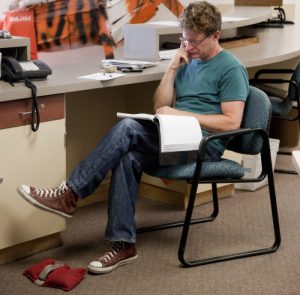 much more common for films like ours to be made in sequence, because there is more money available for filmmakers to do that. But rarely if ever is it done here).
much more common for films like ours to be made in sequence, because there is more money available for filmmakers to do that. But rarely if ever is it done here).
The result of course is that all of us have to create each scene seemingly out of nowhere, and it is often extremely disorienting. The process is like a dream where scenes and moments appear with no apparent connection to each other. We filmed the last scene of the film–a deeply emotional moment–last Wednesday morning, and the work that John Nielsen, who plays the father (Brian), had to do to get himself to that place was extremely difficult and taxing. He was exhausted the rest of the day, while we were filming scenes that take place much earlier in Brian’s life, before the traumatic events that lead to that last scene. It was, simply, a tremendous feat of acting on his part.
But here’s where the jigsaw puzzle comes in. While it would be more “logical” to be able to live the scenes of this film as they would have happened in life, we are instead creating pieces that will–or should–fit together in perfect harmony with the pieces that come before and after them. But there is no guarantee of that, so the puzzle gets deeper with each scene we shoot. Two scenes may fit perfectly well together on paper, but when you breathe life into them, when the actors make them their own and take them places you didn’t expect, then the puzzle begins to take a new shape. Maybe this piece fits better with the one that used to be five pieces away.
But this isn’t a bad thing. In fact, it’s just the opposite. What has happened is that the actors, through living their characters, have given the film it’s own life–and nothing could be more exciting. They have drawn out hidden truths, deep rivers of emotion, and surprising twists that open up a whole new landscape for this story–and fitting those new pieces together has now become an adventure and pleasure not unlike the one I know everyone else in my family feels as they find the pieces that fit in those monstrous jigsaw puzzles.
Which gets me to acting, and what I am learning every day.
But in order to write about acting, I first have to go into what this film is about. (Whenever that question comes up, “What is the film/song/book/poem/play/etc. about?” I always flash on an answer Bob Dylan gave to that question in a 1966 Playboy Magazine interview. When the exasperated interviewer asked him at the end to just tell us what his songs are about, he responded–and I’m paraphrasing here–“Well, some of them are about three minutes, some are about five minutes, and some are even about eight or nine minutes.” But I’m not Bob Dylan, so here’s my answer).
Sweet Old World is about learning to embrace your past, no matter how painful it may be. I don’t mean “Coming to terms” with it, because that expression has always felt confrontational to me. I mean really embracing it. It is part of your DNA, and informs your unique reality whether you accept or try to bury it. All of the people in my film have tried to bury their past–some intentionally and some because they had no other option. But when it comes back, as it inevitably will, the scabs they have formed get torn off and they face both the freedom and horror of opening themselves up and allowing their wounds to really heal.
I have never before directed actors. I have been a documentarian–both in my filmmaking and photography–and I have always seen the connection between finding the stories in people’s lives and creating fictional stories, but that has been pretty abstract to me. So when I begin this process the idea of working with actors was, frankly, terrifying.
But two years ago I began studying with Judith Weston, an acting and directing coach in Los Angeles. Judy has written two fantastic books–Directing Actors, and The Film Director’s Intuition, and she conducts regular workshops on rehearsal techniques, script analysis, and all of the other tools directors need. Before going on, I want to say categorically that if I had not met Judy and taken her workshops these past two years I would not be making this film today.
I won’t go into a lot of detail. You should read her books. But I will say that one critical reality she taught me is that there is no fundamental difference between working with actors and working with “documentary subjects,” between telling a documentary story and telling a fictional one. Both probe the reality that lives under the surface of our lives. Both seek to reveal the emotional truths that drive us.
With fiction, as well as documentary, the job of the director is to find the ways to free up actors to find and live the emotional reality of the scene they are playing. And when they do that, the scene may go in a direction you, the director, never even imagined. In short, they make the story their own.
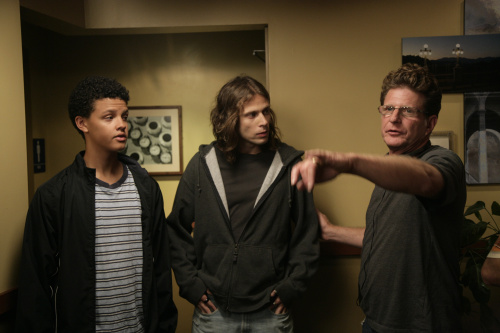 I’ll give you one example that just floored me. One of the pivotal scenes in Sweet Old World is when Jimmie essentially wins Ethan’s heart. Ethan is the main character of the story, a talented musician who is aiming for Julliard. Jimmie, who is two years older than Ethan, is a wild kid who just showed up at school this year. Jimmie and Ethan have a past together, but at this point in the story it is not clear what that is. But Ethan is drawn to him and to the risky, dangerous life he embodies.
I’ll give you one example that just floored me. One of the pivotal scenes in Sweet Old World is when Jimmie essentially wins Ethan’s heart. Ethan is the main character of the story, a talented musician who is aiming for Julliard. Jimmie, who is two years older than Ethan, is a wild kid who just showed up at school this year. Jimmie and Ethan have a past together, but at this point in the story it is not clear what that is. But Ethan is drawn to him and to the risky, dangerous life he embodies.
In this scene, Jimmie has just cold-cocked and gotten the best of a kid twice his size who owes him money and is refusing to pay. And in the process Jimmie needed Ethan to “give me a hand,” bringing him into his world (The scene takes place in the bathroom of a local hangout. I won’t say more, but trust me–you’ll love it). When it’s all over, Ethan and Jimmie are back among the other band kids, and all I knew was that Ethan would be both shocked and exhilarated, trying to process what he had just been a part of. But I really had no idea what form that would take.
So when we shot the scene, I simply asked Jacques Colimon (Ethan) to try to get Eric Peter-Kaiser’s (Jimmie) attention, to distract him. No dialogue. Not knowing what would happen, we began filming. And after maybe twenty seconds, Ethan caught Jimmie’s eye and they both started laughing. Just laughing, totally connected with each other. Turns out of course that neither of them had expected to do that either. It just happened, as spontaneous and real as any laugh could be. It said everything, and it was beautiful.
One thing I have always loved about the documentary process is the surprises. But this one is top on my list.
Week One July 13-16
Photos by Michael Newman

It’s Sunday morning, and I have finally caught up on enough sleep to feel halfway human and begin the risky venture of using my brain again. After two all-nighters Thursday and Friday, I woke up mid-morning yesterday with the bulging disk in my neck throbbing like it never has before (I finished a series of three procedures designed to shrink the disk last week, but it has been resoundingly ineffective, which my pain specialist doctor seems to find personally insulting).
“Roller Coaster” is an easy cliché to use in describing a week of production, but it is apt. Any production situation is a roller coaster. But with documentaries, it’s more like the old-fashioned “out and back” ones that take more time between plunges and by today’s standards are like a drive in the country (I like those). This past week was more akin to the Screaming Zombie Executioner ones that throw and spin you twelve times before you’re settled in your seat. I’ve never been on one of those (and I never will!), but I’ve been through my first week of feature film production as a director and it whips any of those poser roller coaster’s butt.
 We started day one with the fun stuff, the wedding receptions and Brian’s sexual fantasies in their midst. And it most definitely was fun. I’d never been in anything like it. In all of my documentary work, I think the biggest crew I ever had was six. And for Sir! No Sir! it was me and my DP May Rigler traveling around the country lugging our own equipment.
We started day one with the fun stuff, the wedding receptions and Brian’s sexual fantasies in their midst. And it most definitely was fun. I’d never been in anything like it. In all of my documentary work, I think the biggest crew I ever had was six. And for Sir! No Sir! it was me and my DP May Rigler traveling around the country lugging our own equipment.
But here, to shoot three scenes, were forty people doing everything from wardrobe to lighting (and I have less money to make this film than I had for Sir! No Sir!). I have to say right now that we have put together an absolutely amazing group of people–artists and technicians–to bring this film to life. And I’m not just saying that because I have to work with all of these folks for another three weeks. Everyone is working on faith, dedication, and commitment to this project. They’re damned sure not working on this one to get rich (although let me say right now that is not a principal, so go to Kickstarter immediately after you read this and help us keep going).
Being amidst this group, I simultaneously felt elated and overwhelmed. Does it really take this many people to make a film? I am still wrapping my head around that one, but the answer began to emerge as Lorraine Heitzman, our Art Director, added subtle touches to give each scene its distinct quality; as Sica Schmitz, our Wardrobe Stylist, made the three brides and grooms look and feel like this was their big day; and as my Director of Photography Ardy Fatehi, Gaffer Justin Moran-Duquette, designed lighting schemes that gave us the maximum flexibility to film the scenes. And that is just naming a few. Working with everyone fed my collaborationist soul and made for a heady, satisfying day.
But then there was Day Two.
Day Two, a day that was a lesson in communication–or rather lack of it; a day that was driven more by lighting issues than by creating the scenes; a day when my own inner conflicts with how we are making this film emerged and even exploded; but through all of this a day that still brought forward incredible, complex and meaty scenes.
 For me, the joy of making a film is in the process. And key to that process is the collaboration of creative people to bring an idea, an event, an emotion to life. But right from the start of Day Two that collaboration began to break down. We were at Shaker’s Diner in South Pasadena to film two key scenes–the breakfast Brian and Ethan have in the beginning of the film, and the after-game band hangout when Jimmie brings Ethan into his world.
For me, the joy of making a film is in the process. And key to that process is the collaboration of creative people to bring an idea, an event, an emotion to life. But right from the start of Day Two that collaboration began to break down. We were at Shaker’s Diner in South Pasadena to film two key scenes–the breakfast Brian and Ethan have in the beginning of the film, and the after-game band hangout when Jimmie brings Ethan into his world.
Ardy was taking what seemed like forever to light the first scene, and I was getting more and more irritated and anxious, increasingly worried that way too much time was being spent on lighting minutiae, which was squeezing out the most important element, the acting. But I never said anything to Ardy about it, never took him aside and told him my problem with what was happening. I just got more upset. So by the time we had finished shooting that scene I was not in a very good state (it didn’t help that it was about 120 degrees that day, in fact the whole week). When a grip who had gotten some wrong information began drilling into a post in the diner I exploded, screaming at him like in a classically clichéd auteur to get off the set.
(There was, by way of explanation, a method to my madness. In an incredibly generous move, the management of Shaker’s had given us use of half of the restaurant for no fee–we’re talking thousands of dollars here that they essentially gave us for this film. In fact the entire South Pasadena community has gone to great lengths to support us, from the high school to the film office. So when I saw a crew-member drilling into a post I flipped, seeing that generosity and trust being violated before my eyes. But screaming at the guy who’d been told to drill a screw in was…well, you get the picture.)
I felt horrible. Just a few weeks earlier I had told my Assistant Director, Aaron Penn, in no uncertain terms that I wanted no yelling on the set. This was going to be a relaxed, enjoyable experience for everyone. And then, two measly days into the shoot, I had violated my own rule in the most spectacular, destructive way possible.
It took a lot of apologies and explanations to get things back on track, and the rest of the afternoon and evening netted wonderful work from everyone and several revelatory moments from the actors, especially Jacques Colimon (Ethan) and Eric Peter-Kaiser (Jimmie). I promise my next blog will be mostly about acting, the actors, and those revelatory moments that are giving such complex inner life to this story.
But for now, I just want to say that if I had just taken a few minutes to take Ardy aside and talk about what was bothering me, the day would have gone much differently. It’s a classic cliché, but communication is everything.
When I finally did talk to him the next day about my overall approach and the kind of collaboration I wanted from him–which was not about lighting but had to be focused on how the camera captures and enhances the emotional course of each scene–he told me that this was exactly the kind of collaboration he craved but most directors didn’t want. In fact, we were very much on the same page, which I really had known all along. But I had allowed that one situation to drive a wedge between us by not immediately addressing it.
So no matter how insane that Screaming Zombie Executioner gets, I have to be completely present and open at every instant or it will go flying off the tracks. Damn. I thought this was going to be an easy ride!
For the rest of the week Ardy and I, and all of the crew, worked much more closely together and I know that our collaboration will only deepen as the shoot proceeds.
I’ll leave you with a joke Ardy told me the last night of the week:
Q: Why should you never give a Director of Photography a cigarette?
A: Because it takes him two hours to light it.
Next week–the jigsaw puzzle effect and acting Acting, ACTING!

